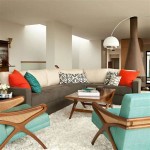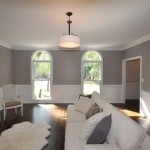How Should I Arrange My Living Room?
The living room is often the heart of a home, a space for relaxation, entertainment, and socializing. A well-arranged living room should be both functional and aesthetically pleasing, reflecting the personal style and needs of its occupants. This article will guide you through the process of arranging your living room, offering practical tips and design considerations to create a welcoming and comfortable space.
1. Define the Purpose and Flow
Before diving into the details of furniture arrangement, it is crucial to define the primary purpose of your living room and how you envision the flow of activity within it. Consider the following:
-
Entertainment:
Do you host movie nights, game nights, or large gatherings? A comfortable seating arrangement with a focal point for the television or entertainment system is essential. -
Relaxation:
A tranquil and cozy atmosphere is important for unwinding. Consider incorporating plush seating, soft lighting, and perhaps a reading nook. -
Work:
If you work from home, your living room might serve as a home office. Designate a dedicated workspace with ample natural light and storage solutions. -
Traffic Flow:
Ensure that pathways between furniture pieces are wide enough for easy movement, preventing any sense of claustrophobia.
Once you have a clear understanding of your living room's intended use and the desired flow, you can begin arranging furniture strategically.
2. Start with a Focal Point
Every living room needs a focal point, a visual anchor that draws the eye and defines the room's character. This could be:
-
Fireplace:
A classic focal point that adds warmth and ambiance to the room. -
Television:
For entertainment-focused living rooms, the television often takes center stage. -
Large Artwork:
A striking piece of art can instantly elevate the room's aesthetic and create a conversation starter. -
Window with a View:
If your living room boasts stunning views, make the window the focal point by placing furniture strategically to maximize the natural light and scenery.
Once you have established a focal point, arrange your furniture around it, creating a balanced and inviting layout.
3. Consider Furniture Size and Scale
The size and scale of your furniture pieces play a significant role in the overall arrangement. Oversized furniture can make a small room feel cramped, while undersized furniture may get lost in a large space.
To create a balanced and visually appealing arrangement, consider these tips:
-
Measure your space:
Determine the exact dimensions of your living room before purchasing or arranging furniture. -
Choose furniture that complements the room's size:
For smaller rooms, opt for furniture with slim profiles and lighter colors. In larger rooms, you have more flexibility to incorporate statement pieces and expansive furniture. -
Experiment with different arrangements:
Don't be afraid to move furniture around until you find a layout that feels comfortable and visually appealing.
Ensure that your furniture pieces are proportionate to the room size, creating a harmonious balance without feeling overwhelming or too sparse.
4. Embrace Symmetry and Balance
Symmetry and balance are crucial principles in interior design. A symmetrical arrangement often creates a sense of order and formality, while an asymmetrical arrangement can introduce dynamism and interest.
Consider the following:
-
Mirroring furniture:
Place matching sofas, armchairs, or accent tables on opposing sides of the room for a balanced and symmetrical look. -
Using different-sized furniture:
To achieve asymmetry, balance a large sofa with a smaller armchair or a tall bookshelf with a low coffee table. -
Creating visual focal points:
Even when using asymmetrical arrangements, it's important to establish a visual focal point that balances the overall composition.
Remember that symmetry and balance are not rigid rules, but rather guiding principles to create a harmonious and appealing living room.
5. Incorporate Lighting
Lighting is a critical element in living room design, affecting the mood, functionality, and overall ambiance of the space. Consider utilizing a combination of lighting types to create a layered and versatile lighting scheme:
-
Ambient lighting:
Overhead lighting, such as ceiling fixtures or chandeliers, creates overall illumination for the room. -
Task lighting:
Lamps placed on desks or side tables provide focused light for activities like reading or working. -
Accent lighting:
Floor lamps, sconces, or recessed lighting highlight specific features or artwork, adding depth and visual interest to the room.
By carefully considering the types and placement of lighting, you can transform your living room into a space that feels inviting and adaptable for various activities.

How To Arrange Furniture In A Long Living Room 2025 Grace My Space
:max_bytes(150000):strip_icc()/jessica.nelson-b3a8a93ef7b34e34b02a8a5e86b6a5f0.jpg?strip=all)
12 Rules To Arrange Living Room Furniture

How To Arrange Living Room Furniture With A Tv And Fireplace From House Home

10 Living Room Interior Design Mistakes How To Fix Them

80 Gorgeous Living Room Decorating Ideas For Every Style

How To Arrange Furniture In The Living Room 7 Star
:max_bytes(150000):strip_icc()/CarinaSkrobeckiPhoto_JessicaNelsonDesign_252222ndAve_01-47bc103d13e34f8d89179a86e968e7eb.jpg?strip=all)
12 Rules To Arrange Living Room Furniture

How To Arrange Furniture In A Rectangular Living Room Design Cafe

How To Arrange Furniture In A Rectangular Living Room Design Cafe

59 Small Living Room Ideas For 2025








